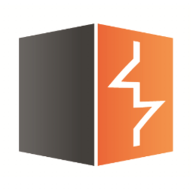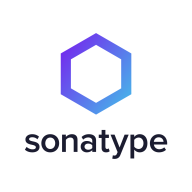

PortSwigger Burp Suite Professional and Sonatype Lifecycle compete in cybersecurity analysis. Sonatype Lifecycle appears to have the upper hand with its superior features, making it a worthwhile investment despite higher costs.
Features: PortSwigger Burp Suite Professional includes advanced penetration testing features, customizable scanning processes, and robust scanning capabilities. Sonatype Lifecycle provides comprehensive software composition analysis, automated security policy enforcement, and strong integration capabilities throughout the software development lifecycle.
Room for Improvement: Burp Suite Professional can improve its integration options, expand automation features, and enhance its user interface. Sonatype Lifecycle could work on speeding up scan times, reducing false positives, and improving real-time threat detection.
Ease of Deployment and Customer Service: Burp Suite Professional is recognized for easy deployment and straightforward support. Sonatype Lifecycle may require a more involved setup process but benefits from comprehensive and responsive customer service.
Pricing and ROI: Burp Suite Professional offers competitive pricing with a promising ROI, appealing to budget-conscious users. Sonatype Lifecycle, although demanding a higher initial investment, promises a strong ROI justified by its advanced features and security assurances.
We have seen cost savings and efficiency improvements as we now know what happens in what was previously a black box.
The technical support from PortSwigger is excellent.
The technical support for PortSwigger Burp Suite Professional is pretty good, and I would give it a nine.
They are helpful when we raise any tickets.
JFrog is easier to configure for high availability as it does not require extra components.
PortSwigger Burp Suite Professional is very stable.
PortSwigger Burp Suite Professional is a very stable tool, and I would rate its stability as eight out of ten.
Sonatype Lifecycle is very stable, especially in the binary repository management use case for managing binary artifacts.
Some AI features might be added.
The dashboard of PortSwigger Burp Suite Professional could be made more user-friendly.
We also noticed a lack of detailed information for configuring Sonatype Lifecycle for high availability and data recovery.
The pricing for PortSwigger is very cheap, and there are benefits in terms of time and cost savings.
I find the price of PortSwigger Burp Suite Professional to be very cost-efficient.
For larger numbers like our case with 1,000 user licenses, JFrog becomes much more cost-effective, roughly ten times cheaper than Sonatype.
The most valuable feature of Burp Suite Professional is its ability to schedule tasks for scanning websites.
The most valuable features of PortSwigger Burp Suite Professional are its ease of use and its cost efficiency.
I especially value the features for penetration testing.
The integration into our CICD pipeline enables us to continuously monitor code changes and identify new vulnerabilities.
The most valuable feature for us is Sonatype Lifecycle's capability in identifying vulnerabilities.


Burp Suite Professional, by PortSwigger, is the world’s leading toolkit for web security testing. Over 52,000 users worldwide, across all industries and organization sizes, trust Burp Suite Professional to find more vulnerabilities, faster. With expertly-engineered manual and automated tooling, you're able to test smarter - not harder.
PortSwigger is the web security company that is enabling the world to secure the web. Over 50,000 security engineers rely on our software and expertise to secure their world.
Sonatype Lifecycle is an open-source security and dependency management software that uses only one tool to automatically find open-source vulnerabilities at every stage of the System Development Life Cycle (SDLC). Users can now minimize security vulnerabilities, permitting organizations to enhance development workflow. Sonatype Lifecycle gives the user complete control over their software supply chain, allowing them to regain wasted time fighting risks in the SDLC. In addition, this software unifies the ability to define rules, actions, and policies that work best for your organizations and teams.
Sonatype Lifecycle allows users to help their teams discover threats before an attack has the chance to take place by examining a database of known vulnerabilities. With continuous monitoring at every stage of the development life cycle, Sonatype Lifecycle enables teams to build secure software. The solution allows users to utilize a complete automated solution within their existing workflows. Once a potential threat is identified, the solution’s policies will automatically rectify it.
Benefits of Open-source Security Monitoring
As cybersecurity attacks are on the rise, organizations are at constant risk for data breaches. Managing your software supply chain gets trickier as your organization grows, leaving many vulnerabilities exposed. With easily accessible source code that can be modified and shared freely, open-source monitoring gives users complete transparency. A community of professionals can inspect open-source code to ensure fewer bugs, and any open-source dependency vulnerability will be detected and fixed rapidly. Users can use open-source security monitoring to avoid attacks through automatic detection of potential threats and rectification immediately and automatically.
Reviews from Real Users
Sonatype Lifecycle software receives high praise from users for many reasons. Among them are the abilities to identify and rectify vulnerabilities at every stage of the SDLC, help with open-source governance, and minimize risk.
Michael E., senior enterprise architect at MIB Group, says "Some of the more profound features include the REST APIs. We tend to make use of those a lot. They also have a plugin for our CI/CD.”
R.S., senior architect at a insurance company, notes “Specifically features that have been good include:
• the email notifications
• the API, which has been good to work with for reporting, because we have some downstream reporting requirements
• that it's been really user-friendly to work with.”
"Its engine itself is most valuable in terms of the way it calculates and decides whether a security vulnerability exists or not. That's the most important thing. Its security is also pretty good, and its listing about the severities is also good," says Subham S., engineering tools and platform manager at BT - British Telecom.
We monitor all Application Security Tools reviews to prevent fraudulent reviews and keep review quality high. We do not post reviews by company employees or direct competitors. We validate each review for authenticity via cross-reference with LinkedIn, and personal follow-up with the reviewer when necessary.